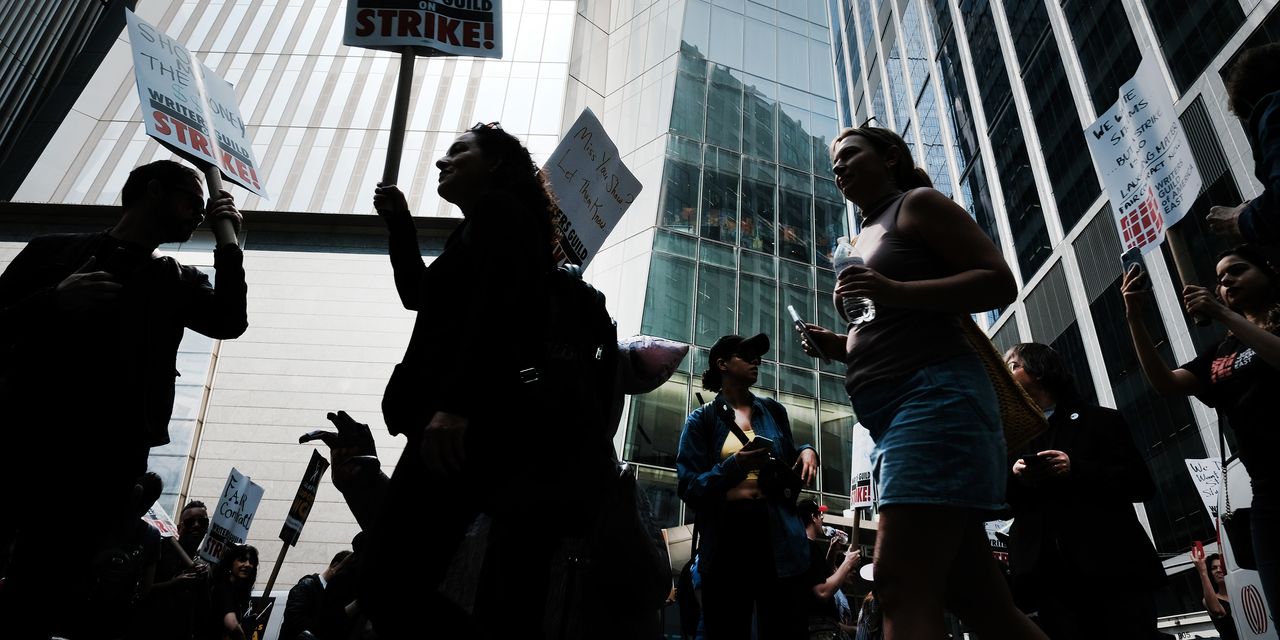About the author: Will Johnson serves as CEO of The Harris Poll.
As the Hollywood writers’ strike nears its third month, thousands of employees in the film industry are putting pressure on studios and networks. Countless movies and TV shows have been halted in recent weeks, with more dominoes to fall.
In the process, organized labor has reminded millions of Americans that its power endures, despite the decades-long decline in private-sector union membership. Since union membership overall peaked at more than one-third of the U.S. workforce in the mid-1950s, the private-sector share has fallen to just 6% today. Public-sector membership (33%) remains robust, but vanishingly few private-sector workers are part of a labor union—or even interested in joining one.
Organized labor’s critics may celebrate its long-term decline, but American public opinion paints a more nuanced picture. Most Americans still support labor unions as a whole, retaining the belief that collective bargaining is a powerful, necessary tool for employees to use as leverage.
According to a new survey from The Harris Poll, two-thirds (65%) of U.S. adults agree that collective bargaining is the only way for workers to guarantee fair treatment from their employers. Only 14% of adults oppose collective bargaining, with 74% in agreement that groups of workers who do not belong to a labor union should still be able to employ collective bargaining tactics to their advantage.
America’s view of organized labor itself is more complicated. While most Americans recognize the necessity of collective bargaining, they don’t necessarily believe that labor unions are valuable in every market segment. Six in 10 U.S. adults (57%) agree that organized labor is only necessary for workers in certain industries. Emphasis on certain.
Of course, public opinion depends on the state of the U.S. economy at a given moment in time. Labor unions are more likely to be perceived favorably during growth periods. In economic recessions, on the other hand, their reputation is only jeopardized. Nearly 60% of U.S. adults agree that labor unions are less powerful during times of economic hardship—an especially important caveat in 2023.
Now, what does this all mean? America’s relationship with organized labor may be complex, but public opinion does leave employers, employees, and labor unions with key takeaways that are instructive.
For labor unions, the task is simple (albeit difficult to execute): Make your value-add clear and conclusive to employees. While organized labor is still perceived favorably among vast swaths of the American electorate, membership declines suggest union officials need to message more strategically to the workers they are targeting, ensuring that those workers understand the benefits of joining—and remaining in—a labor union. Workers need to believe that the benefits of union membership outweigh the potential costs, such as union dues or perhaps even retribution from an employer.
At the same time, employers—especially anti-union ones—need to recognize that their sentiments may not be shared by their workforce. Like labor unions themselves, companies that are traditionally resistant to union organizing must clearly and conclusively state the “why not,” while those on the labor side of the table make the case for “why.”
Employees, meanwhile, need to run a cost-benefit analysis for themselves. There are benefits and costs to joining and remaining in a labor union, and both sides must be taken into account. If organized labor is active in their industry, workers should be swayed by the facts on one side or the other, regardless of the peer pressure, harassment and intimidation that too often manifest themselves during union organizing campaigns.
In some work environments, there is a place for organized labor. In others, there isn’t. What’s clear for employers, employees, union officials and all Americans is that public opinion on organized labor remains situation-dependent.
What flies in Los Angeles film studios may not apply to other parts of America, and vice versa. Pro- or anti-union, the state of organized labor is not black and white.
Guest commentaries like this one are written by authors outside the Barron’s and MarketWatch newsroom. They reflect the perspective and opinions of the authors. Submit commentary proposals and other feedback to [email protected].
Read the full article here





